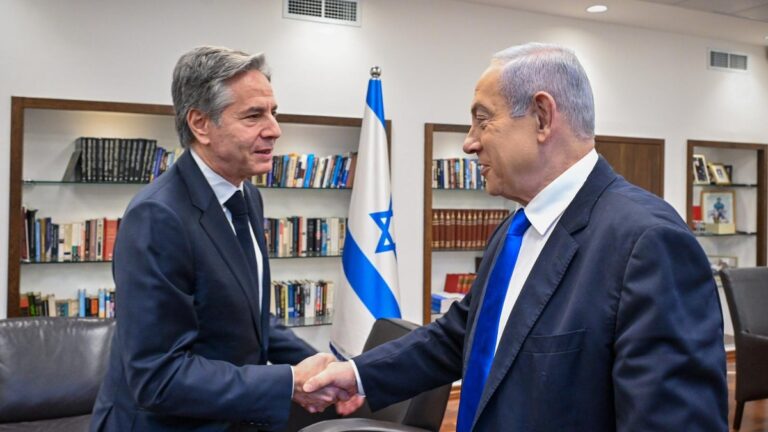News Desk, Kolkata : A Delicate Dance: Navigating Middle East Diplomacy
In the intricate tapestry of Middle East diplomacy, the recent developments surrounding the proposed deal between Israel, the United States, and Saudi Arabia have brought both optimism and challenges to the forefront. The Israeli Prime Minister, Benjamin Netanyahu’s rejection of the proposal for Saudi normalization with Israel in exchange for a pathway to Palestinian statehood underscores the complex dynamics at play.
Netanyahu’s Stance
Netanyahu’s steadfast refusal to endorse any arrangement leading to a Palestinian state reflects the enduring complexities of the Israeli-Palestinian conflict. His rejection, despite the potential for Saudi support and regional stability, highlights the deeply rooted concerns and historical narratives that shape Israeli policy.
Blinken’s Strategic Approach
US Secretary of State Antony Blinken’s nuanced approach acknowledges that a military solution alone cannot uproot entities like Hamas. By emphasizing the need to avoid repeating historical mistakes, Blinken charts a course that recognizes the multifaceted nature of the conflict. The proposal’s requirement for steps toward Palestinian sovereignty rather than an immediate state reflects a pragmatic attempt to balance competing interests.
Regional Dynamics
The broader regional context adds layers to this diplomatic dance. Saudi Crown Prince Mohammed bin Salman’s commitment to Gaza’s reconstruction and support for a reformed Palestinian Authority signals a broader Arab interest in stabilizing the region. The condition for normalization serves as a middle ground, recognizing the need for progress while acknowledging the challenges of an immediate Palestinian state.
Netanyahu’s additional commitments, such as refraining from a major attack on Hezbollah and allowing UN officials to assess conditions in northern Gaza, indicate a willingness to engage in measured steps that contribute to regional stability.
US-Israel Relations
Despite a lapse in communication, the Biden administration’s ongoing collaboration with Netanyahu demonstrates the strategic importance the US places on its relationship with Israel. While the administration is not actively planning for a post-Netanyahu era, the engagement with other Israeli figures, including Minister Benny Gantz and Opposition Leader Yair Lapid, showcases a multifaceted approach to diplomacy within the region.
Hope for Peace
The United States maintains a hopeful outlook for peace in the Middle East, tying it to the eventual establishment of a Palestinian state. Even amid the increased complexity resulting from recent conflicts, the commitment to discussions on normalization between Israel and Saudi Arabia persists.
The war in Gaza, initiated by a Hamas-led attack three months ago, triggered an Israeli military offensive aimed at recovering hostages and countering threats to its civilians. The toll on both sides underscores the urgency of finding lasting solutions and highlights the interconnected nature of peace and stability in the region.
In conclusion, the delicate dance of Middle East diplomacy requires navigating historical grievances, complex regional dynamics, and the intricate balance of power. As the US, Israel, and Saudi Arabia engage in negotiations, the hope for a lasting peace remains tethered to the ability to address the root causes of the conflict and find mutually agreeable solutions.
DISCLAIMER
Our news media denounces any form of bias and disapproves of sensationalism. The disseminated news is entirely educational and aimed at social awareness. Our media maintains absolute impartiality, adhering solely to the purpose of education and social consciousness.


